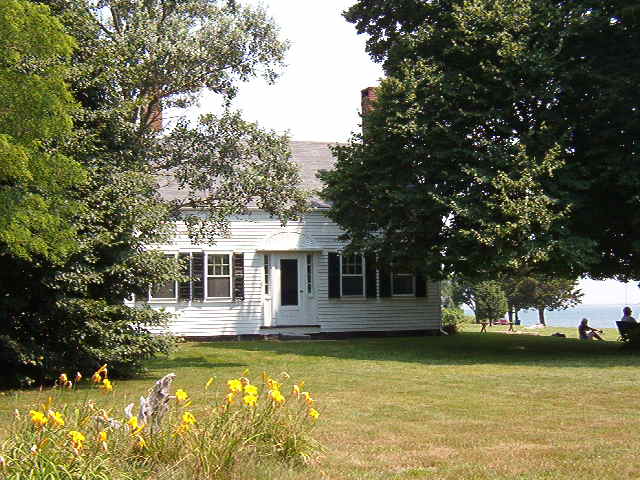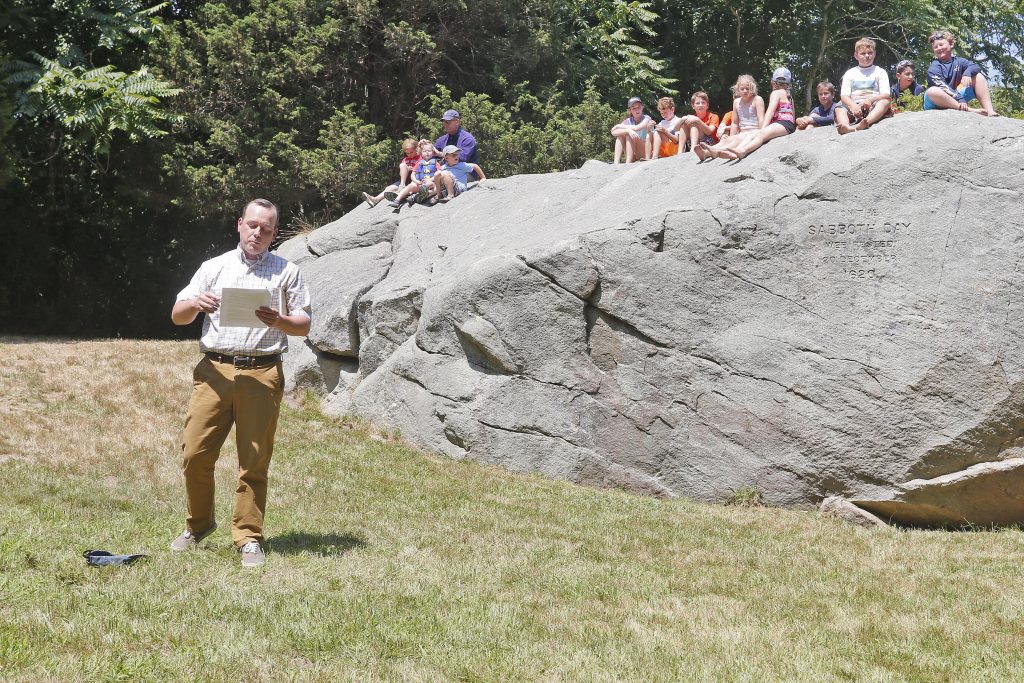The DRHS owns approximately 17 acres of land on Clark’s Island, located in Plymouth Bay. These holdings include land on the west shore, the eastern shore, Pulpit (Election) Rock, a boat house called Hop House, and the house property known as Cedarfield (built in 1836 and the second-oldest house on the island). The property was donated to the DRHS in 1969 by the Pilgrim Rock Foundation. The property had been part of the estate of Sarah Wingate Taylor (d. 1964).
History of the Island:
The Island’s European history extends back to the landing of the Pilgrims when, during a blinding storm in December of 1620, a band of Pilgrim explorers rowed into Plymouth Bay. Leaving the Mayflower anchored off Cape Cod, this group of 18 had been sent ahead to find a suitable place for settlement. John Clark, the first mate, spotted the shore of what is now known as Clark’s Island and was the first of them to set foot there. Historical legend goes on to say, that as the next day was the Sabbath, the explorers could not begin repairs on their battered vessel. Instead, the group, including William Brewster, Myles Standish, and William Bradford, marched to the top of the nearest hill in search of a place to worship. They found an enormous boulder at the crest of the Island, and there elected to hold their first worship service ashore. Today, the boulder is known as Pulpit (Election) Rock and is inscribed with words from William Bradford’s journal, “On the Sabboth Day Wee Rested.”
The Town of Plymouth sold Clark’s Island to a group of individual families in 1690, many of whom would continue to hold the properties for centuries. From Cedarfield, Sarah Wingate Taylor directed the Pilgrim Rock School for American Studies beginning in 1963, inviting talented students and scholars to engage in discussion and advanced learning. Notable visitors to the island throughout the history of the house, include Henry David Thoreau, Louisa May Alcott, and Truman Capote.
The DRHS maintains Sarah Wingate Taylor’s tradition of education each year through its Sarah Wingate Taylor lecture series, and the annual picnic and commemorative service at Pulpit (Election) Rock. This property is private property and has a caretaker present. Visitation is possible during the summer season. For more information or to make an appointment for your visit, please call 781-934-6106. Thank you.





